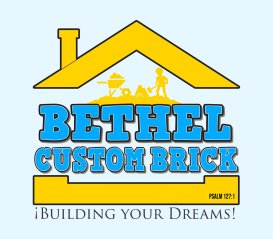When Do You Need Chimney Restoration Services?
If your chimney shows signs of deterioration, such as cracked mortar, spalling bricks, or a damaged flue liner. These issues can lead to moisture intrusion, smoke leaks, reduced fireplace efficiency, and even fire hazards. A damaged or missing chimney cap, efflorescence (white residue on bricks), or smoke backing up into your home are also indicators that restoration is necessary. By addressing these problems, chimney restoration ensures your home’s safety, prevents further damage, and helps maintain the efficiency and longevity of your chimney system.
Full chimney restoration is a thorough process aimed at addressing major structural damage and ensuring the long-term durability of your fireplace. The sooner structural issues are repaired, the better for your chimney's safety and performance. Here are some common situations that require a complete restoration:
- Loose & Crumbling Bricks: Bricks that are weak and deteriorated will begin to loosen, leading to instability and more costly repairs.
- Typical Causes: Freeze-thaw cycles; Creosote; Weakening foundation; Water damage; Poor construction; House settling.
- Crumbling Mortar: If significant portions of mortar are missing or severely deteriorated, it will lead to structural instability and more costly repairs.
- Typical Causes: Poor quality materials; Old age; Moisture mixing with creosote; Water damage; House settling.
- Damaged Chimney Crown: A cracked or missing chimney crown exposes the entire structure to water damage. Cracks on the crown are often hard to spot from the ground and require a more thorough inspection. Fixing this early will prevent further damage to your chimneys structure.
- Typical Causes: Temperature fluctuations; Construction / foundation problems; Water damage.
- Deteriorated Flue Liner: The flue liner is the interior lining of the chimney. If it is cracked, broken, or corroded, it must be replaced. Your chimney flue can take a beating due to Michigan's harsh winters.
- Typical Causes: Poor construction; Construction / Moisture mixing with creosote; Combustion byproducts.
- Damaged Chimney Bricks: Multiple bricks that are damaged or missing can result in major structural weakness.
- Typical Causes: Water damage; Construction / Creosote buildup; Cracked mortar joints; Old age.
- Persistent Water Leaks: Water that is regularly leaking into the home may indicate a severe breach in the chimney's integrity. The more common cause of severe leaks is a damaged chimney crown.
- Typical Causes: Deteriorating mortar; Cracked chimney crown; Damaged chimney cap; Condensation; Bad seals (flashing).
- Extensive Mold Growth: The presence of significant mold inside the chimney or within the home suggests prolonged moisture exposure.
- Typical Causes: Missing chimney cap; Cracked crown; Damaged flashing; Poor ventilation; Chimney blockages; Leaks; Creosote buildup.
When it Comes to Chimney Restoration, Being Meticulous is a Virtue
The experts at Bethel Custom Brick have decades of experience with both modern and historical chimneys. Our thorough inspection process carefully examines the entire chimney structure, not just visible cracks, to identify any underlying issues. By addressing these problems, we ensure long-lasting results that protect your investment. Not only will you enjoy peace of mind, but you'll also save time and money in the long run with our comprehensive approach.
We Go Beyond the Basics With Our Chimney Inspections
While chimney restoration focuses on addressing visible issues, there are critical aspects often overlooked that can significantly impact the effectiveness and longevity of the repair. Here's a closer look at these hidden factors:
- The Flue Liner: The flue liner is the internal lining of the chimney, responsible for guiding smoke and gases safely up and out. It's often neglected during restoration, even though cracks, corrosion, or a misaligned liner can lead to severe problems. A damaged flue liner can cause smoke leaks, creosote buildup, and even fire hazards. It can also reduce the fireplace's efficiency, making it harder to heat your home. We'll ensure that the flue liner is inspected thoroughly during restoration. If necessary, it should be repaired, relined, or replaced to allow for proper airflow and safety.
- The Chimney Crown: The chimney crown is the cap at the top of the chimney, acting as a barrier against water infiltration. A cracked, missing, or poorly sealed crown can lead to significant damage within the chimney. As mentioned above, damage to the chimney crown can be difficult to spot from the ground.
- Beyond Visual Inspection: As mentioned earlier, damage to the chimney crown can be difficult to spot from the ground. While visually inspecting the crown is important, it's also crucial to check its structural integrity and the sealant's condition. During the restoration we'll address any cracks, leaks, or gaps to ensure a watertight seal. A properly restored chimney crown safeguards your home from costly water damage and ensures your chimney's longevity.
- Mortar Joints: Mortar joints bind the bricks together, ensuring the structural integrity of the chimney. Cracks, gaps, and crumbling mortar can compromise the chimney's strength and allow water infiltration. It's important to remember that mortar replacement should go beyond simply filling gaps. The process we follow will ensure that the existing worn or damaged mortar is removed, and the new mortar will be compatible with the old.
- The Chimney Chase: The chimney chase is the section of the chimney that runs through the attic or roof. It's often forgotten during restoration, despite being susceptible to leaks, animal infestation, and condensation. Inspecting and sealing the chimney chase during restoration prevents water damage, eliminates potential pathways for animals, and helps prevent condensation buildup. Addressing the chimney chase ensures a complete and effective restoration, protecting the chimney and your home from unseen issues.
- The Fireplace Damper: The damper controls the flow of smoke and air in and out of the chimney. A damaged or malfunctioning damper can lead to smoke leaks and inefficiency. Inspecting and repairing the damper during restoration is crucial. It should be lubricated, adjusted, and tested to ensure it functions properly. Our team will ensure that your damper is operating properly, and that it's efficient and safe for your fireplace.
The Importance of a Comprehensive Restoration
To ensure a truly successful chimney restoration, it's essential to choose a qualified professional who performs a comprehensive inspection and addresses these often overlooked aspects. This thorough approach safeguards your investment, protects your home, and ensures long-lasting peace of mind. Remember, meticulous restoration goes beyond simply fixing visible problems. By addressing these hidden factors, you can ensure a safe, efficient, and long-lasting chimney for your home.
Older Chimney's and Preserving Their Historical Accuracy
Maintaining historical accuracy during the restoration process is important. Materials such as brick or stone, mortar, and even the waterproofing sealants that are used must be matched. Historically appropriate materials will also be used when rebuilding or replacing damaged areas is necessary. Here’s a breakdown of what’s involved in the restoration of older historical chimneys:
- Assessment and Inspection
- Historical Evaluation: We would be asking for some information about the chimney's history - the period when it was built, the materials used, and any architectural significance. Understanding the historical context ensures that the restoration aligns with the original design. Photos are very helpful if available, especially if the structure is severely damaged or deteriorated.
- Structural Inspection: Our professionals will conduct a thorough inspection to assess the chimney’s current condition. This would involve looking for cracks, chimney tilting, spalling bricks, mortar deterioration, water damage, or unsafe conditions.
- Chimney Flue Inspection: The flue and lining inside the chimney will also need to be examined. Here we'll be looking for cracks in the lining and any blockages from debris. NOTE - If your older chimney does not have a flue, it is generally recommended to install one during restoration. Adding a flue liner can significantly improve the safety, functionality, and longevity of the chimney.
- Materials and Techniques Matching
- Mortar Matching: Historical chimneys often used lime-based mortar, which is softer and more flexible than modern cement mortar. Repointing (replacing old, deteriorating mortar) must be done with materials that closely match the original mortar in composition, texture, and color to avoid damaging the chimney structure.
- Brick or Stone Matching: If any bricks or stones need to be replaced, our professionals will match the original materials as closely as possible in terms of size, color, texture, and type. Sourcing reclaimed or custom-manufactured bricks would be an alternative if necessary.
- Preservation Techniques: Techniques like tuckpointing (precisely applying mortar to mimic the original joint appearance) or using special lime putty mixes are often required to ensure historical accuracy.
- Structural Repairs
- Rebuilding or Replacing Damaged Areas: If parts of the chimney are severely damaged or unstable, those sections may need to be carefully dismantled and rebuilt. In these cases, it's essential to reuse original materials wherever possible, or use historically appropriate replacements.
- Stabilization: In cases where the chimney is leaning or unstable, it may need to be structurally reinforced. This can involve adding internal or external support, such as steel rods or anchors to secure the chimney without altering its historical appearance.
- Repairing the Crown: The chimney crown (the top part) often experiences significant weather-related damage over time. Repairing or replacing the crown with appropriate materials (usually concrete or stone) is crucial to prevent water infiltration and further deterioration.
- Chimney Liner Replacement
- Many older chimneys do not have modern liners, or the liners may be degraded. Installing or replacing the chimney liner (often with stainless steel or clay tiles) helps improve safety by preventing heat transfer to nearby combustible materials and enhancing the chimney’s draft.
- Waterproofing and Sealing
- Waterproofing Sealants: Historical chimneys are particularly vulnerable to water damage because they were built with materials that allow water to penetrate. Applying breathable waterproofing sealants (like siloxane-based sealers) helps protect the chimney from moisture while still allowing the masonry to breathe.
- Flashing Repairs: Chimney flashing (where the chimney meets the roof) often needs to be repaired or replaced during restoration to ensure there are no leaks. Historically appropriate flashing materials, like lead or copper, may be used.
- Preserving the Original Aesthetic
- Materials: We avoid using modern, hard mortars or bricks that could negatively impact the structural integrity and appearance of the chimney. Lime mortar, for example, is crucial for allowing the chimney to expand and contract with temperature changes, which is typical for older structures.
- Detail Work: Our experts pay close attention to the architectural details, such as corbels, patterns in the brickwork, or other design features. As much as possible, these elements will be preserved or restored to their original condition.
Restoring a historical chimney requires careful planning, expertise in traditional masonry techniques, and an appreciation for the architectural value of the structure. The professionals at Bethel Custom Brick will ensure that the longevity and aesthetic beauty of your chimney is restored, while respecting its historical significance.

